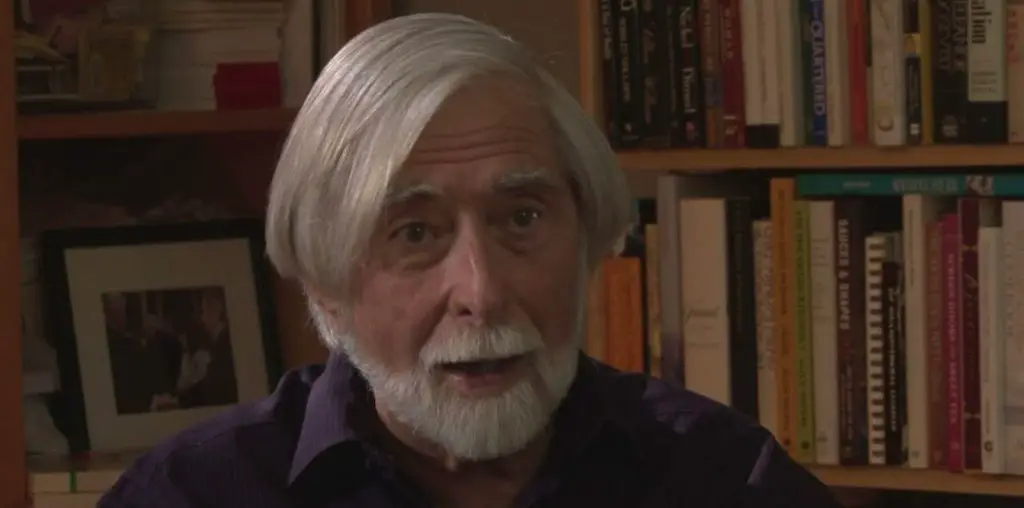
When trailers for “Apocalypto” hit theaters in late 2006, director Mel Gibson seemed out to exploit another historical source for gruesome effects. Could the man who conceived Christ as a punching-bag resist Mayan culture, with its human sacrifices and knives made of volcanic glass? After all, Gibson was fresh off his inebriated Anti-Semitic rant to a traffic cop.
An opening scene in “Apocalypto” proves to be quite sadistic, as a hunted tapir (i.e., hog-like beast) gets impaled on a multi-spiked booby-trap device. The film’s central character, “Jaguar Paw” (Rudy Youngblood), disembowels the beast in the jungle and orders his brethren to eat a less-appealing organ. At the end of a high-energy chase, the scene hints that Gibson’s more concerned with the gross-out than building a story for his audience.
But soon enough, something clever strikes. Jaguar Paw pauses during the ritual, still and alert like a deer that hears the faintest sound. Gibson cuts to a dense forest, which shifts as if its trees are quietly coming alive. Behind a tree appears another native, in hair dress and clothing obviously of another tribe. He’s followed by his fellows, all of whom are scared witless. Their village has been ravaged, and they have resorted to offering a sizable catch of fish in fear of not being allowed to pass. This subtle moment speaks much about universal xenophobia, how different undeveloped peoples of the same land regarded each other like aliens.
When the tribes interact, however, we see the artifice of their situation. Granted, Gibson and co-writer Farhad Safinia need to differentiate these two groups for clarification, but once a ransacking tribe appears, all three become caricatures. The villainous tribe seems to have ordered three coats of makeup as they are dressed with enough spikes, skull-adornments, and warpaint to be only the insane creations out of Gibson’s sketchbook. If Gibson were alluding to his “Mad Max” days, he made an odd choice to create the Mayan equivalents of Lord Humongous and Toecutter.
This character conception – as cumbersome as the “white hat”/”black hat” rule for the good/bad in classic Westerns – highlights an overall formulaic treatment. Gibson attempts to humanize Jaguar Paw’s tribe, whose village will soon be overrun by its mercenary neighbors. But the central group’s motivations and attitudes are indistinguishable from the cast of “Varsity Blues.” We wonder why a treatment so formulaic would come from a filmmaker deliberately working outside the studio system. Dwelling in scorned impotent warriors and oral-sex practical jokes, Gibson and Safinia make no attempt to re-imagine humor through another culture’s eyes. These and other results prove the initial reaction to be true – that Gibson’s more interested in the natives’ exploits than their culture.
But as myopic as the approach is, this zealous filmmaker knows how to cast his subjects into pursuit and keep a steady camera upon them. When Paw runs from captivity, an extended chase becomes Gibson’s goal, enough so that he forgets grisly exploitation for a time. The visual style effectively shifts from unmeasured macabre to kaleidoscopic shots of taught flesh and jungle, even if the score misuses an epic tone. Unfortunately, some gimmicks – such as a panther chase and a beehive-turned-weapon – further the escapee’s chances, but Gibson proves to be a protégé of early George Miller by keeping the suspense tight. The latter portion of the film runs so well that we are inclined to forget two glaring (one literal) uses of deux ex machina: one helps the hero avoid sure death midway; the other appears at the climax, which maybe clever in its historical allusion but cops out when it comes to plot construction.
In a commentary track by Gibson and Safinia, any insights about the script/direction come from the latter, while the giddy Gibson reminisces about the shoot and his schoolboy fun using effects. This up-front look at Gibson shows a man who’s either losing a hold on reality or is ever-ready to reach for the bong. The commentary, a run-of-the-mill behind-the-scenes featurette, and a deleted scene of a charred deer don’t leave much of note on this disc next to Gibson’s uneven action yarn, one that suggests his directorial Apocalypse is fast approaching.

